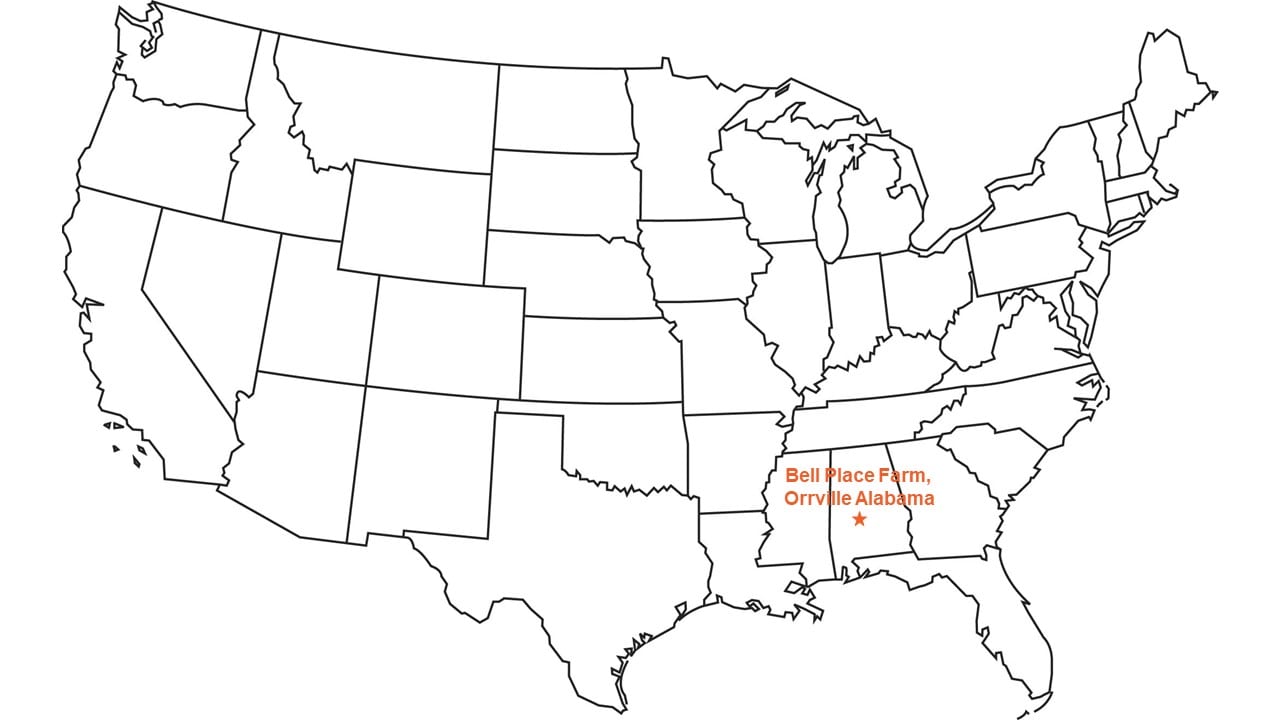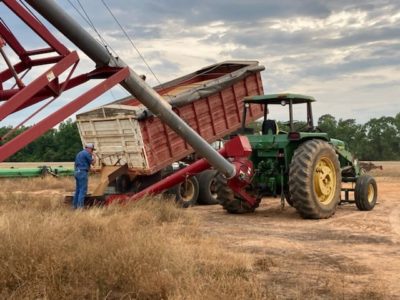We finished planting our full-season crops by the end of May. Then we started harvesting winter wheat on June 1. However, after cutting just one semi-load, rain and wet fields kept us from continuing harvest for more than a week. In the meantime, we were able to protect other emerging crops from a variety of pests.
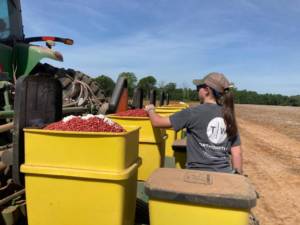 Just getting to this point of the season, with the single-season crops planted, required a lot of varied work. It takes time to swap the planter and seed between different crops. As my photos show, getting the crops planted was a family affair, with my husband and daughters helping out when they had time.
Just getting to this point of the season, with the single-season crops planted, required a lot of varied work. It takes time to swap the planter and seed between different crops. As my photos show, getting the crops planted was a family affair, with my husband and daughters helping out when they had time.
In mid-May, we planted our peanuts in about 4 days. That was our top priority at the time, because we were running about two weeks behind our average planting schedule. Shortly after planting, we applied herbicide to control grass and keep it from competing with the emerging peanuts.
Then, we changed the plates and sprockets on the planters to finish planting cotton and then soybeans. Again, after planting we followed each crop with the sprayer. Herbicide application provided grass control in the grain sorghum, cotton and soybeans. We applied insecticide to the cotton to control thrips, including some herbicide where needed to also control broadleaf weeds.
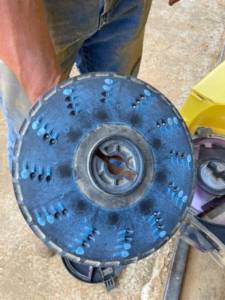 We planted full-season soybeans the last week of May. We were able to finish in a week, and then we applied herbicide for weed control. As we finished planting soybeans, our soils were getting drier. However, because we planted soybeans no-till into cotton stubble from last year, the soils retained enough moisture to allow them to germinate and emerge. We saw similar benefits when no-tilling grain sorghum into soybean stubble from last year. We can easily see how no-till helps us conserve moisture and improve chances of emergence better than conventional tillage practices, improving our sustainability – especially during times when moisture is scarce.
We planted full-season soybeans the last week of May. We were able to finish in a week, and then we applied herbicide for weed control. As we finished planting soybeans, our soils were getting drier. However, because we planted soybeans no-till into cotton stubble from last year, the soils retained enough moisture to allow them to germinate and emerge. We saw similar benefits when no-tilling grain sorghum into soybean stubble from last year. We can easily see how no-till helps us conserve moisture and improve chances of emergence better than conventional tillage practices, improving our sustainability – especially during times when moisture is scarce.
We immediately switched gears to harvesting the winter wheat on June 1. However, after cutting just one semitruck load of wheat, weather forced us to pause. Though it slowed winter wheat harvest, that slow, soaking rain helped the crops grow quickly to outgrow deer pressure and get to a better place.
As weather allows, we continue to focus on harvesting winter wheat. So far, it appears to be an average wheat crop – not our best crop ever, but certainly not our worst. As soon as it is cut, we will plant double-crop soybeans and sorghum directly into the wheat stubble, again helping us conserve moisture and control weeds. We intend to plant about 34 hectares, or 85 acres, of double-crop soybeans, and about 38 hectares, or 95 acres, of grain sorghum.
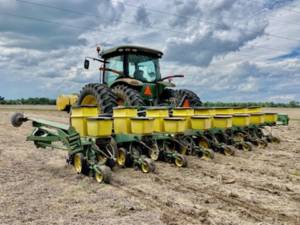 Though we want to get these crops planted as soon as possible, I will take a couple days to participate in soybean industry meetings. One of those meetings will be a virtual customer meeting that the U.S. Soybean Export Council (USSEC) is coordinating with potential food-grade soybean customers in South Korea. I enjoy sharing the work we do as farmers with customers around the world.
Though we want to get these crops planted as soon as possible, I will take a couple days to participate in soybean industry meetings. One of those meetings will be a virtual customer meeting that the U.S. Soybean Export Council (USSEC) is coordinating with potential food-grade soybean customers in South Korea. I enjoy sharing the work we do as farmers with customers around the world.
This time of year is very hectic, but our efforts are proving to be productive and helping our crops thrive. I love watching our crops grow along with our children and enjoy working in God’s office every day. Until next time, do what you love…and love what you do!
